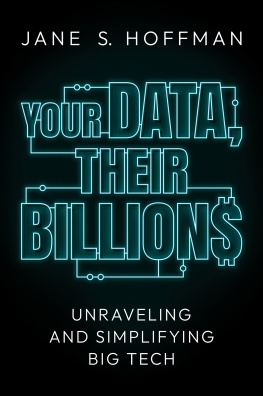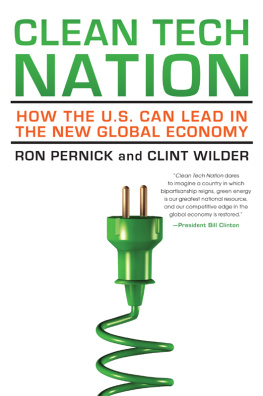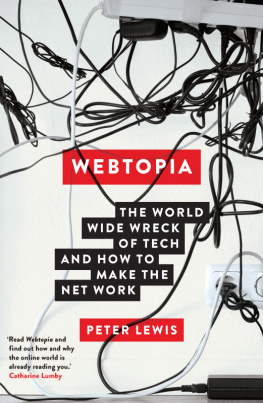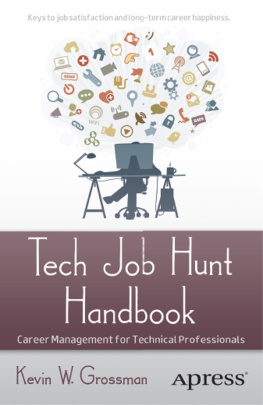Even smart people sometimes get basic facts about technology wrong, leading them to waste time and effort. This book helps you overcome common sources of tech confusion and misconception.
If you want to share this ebook with a friend, we ask that you do so as you would with a physical book: lend it for a quick look, but ask your friend to buy a copy for careful reading or reference.
Copyright 2016, alt concepts inc. All rights reserved.
You can access extras related to this ebook on the Web (use the link in , near the end; its available only to purchasers). On the ebooks Take Control Extras page, you can:
If you bought this ebook from the Take Control Web site, it has been added to your account, where you can download it in other formats and access any future updates. However, if you bought this ebook elsewhere, you can add it to your account manually; see .
Introduction
As a parent of two young children, Ive been fascinated to watch how kids learn about the world and how their understanding of technology evolves. When my older son was about two, hed pick up a remote control and try to talk on it like a telephone. In his mind, any oblong plastic box with buttons on one side must be a telephoneits easy to see how he might make that mistake. Within a couple of months, he understood that a remote control is differentits the thing we point at the TV to make it play his favorite shows. But then he became confused and frustrated when we handed him a toy remote control that only made noise when he pressed the buttons; he couldnt understand why the TV wouldnt respond.
We expect kids to make these kinds of errors, and we laugh knowingly as we watch how they try to put something into one logical category, notice that it doesnt quite fit, and then try another. This is all part of growing up. But in fact, we never stop trying to make sense of the world. When we encounter a new thing we dont entirely understand, we automaticallyperhaps unconsciouslytry to construct a mental model of what must be happening behind the scenes. These models not only help us explain what were seeing, they also help us predict how things will work in the future. Its just that sometimes, through no fault of our own, we guess wrong.
I get lots of technical questions from people who have read my books and articles or heard me speak somewhere. All too often, the questions are phrased in a way that shows they come from a mistaken mental model. For example, since Ive written a lot about security in general and encryption in particular, Im often asked Since OS Xs FileVault encrypts all the files on my disk, doesnt that mean when I copy a file to another disk, its still encrypted? No! It absolutely does not mean thatand the same is true of other full-disk encryption systems, regardless of which platform you use. (I explain why in .) But I can easily see how someone might draw such a conclusionand misunderstanding something like that could cause someone to make an unsafe decision about how to handle sensitive files.
Thats how I came to the premise of the flipped bit. Computers, as we all know, store information as a series of ones and zeroes. Every slot that can hold either a one or a zero is a bit. If the bits value is zero and you flip it, it becomes a one. Flip it again, and its back to zero.
Sometimes bits get flipped inadvertently due to programming errors, mechanical failures, media degradation, cosmic raysreally!or other random occurrences. And unfortunately, a single flipped bita one where a zero should be, or vice-versacan mean the difference between a program succeeding and failing. After all, 0111011 is w in binary, but 0111011almost the same, but with one bit flippedis s. Sometimes a change as small as a single flipped bit can spell the difference between a win and a sin!
A flipped bit, in other words, is a tiny errorseemingly insignificant on its own. But if the wrong bit is flipped, an entire system can break down. In each chapter of this book, I examine one or more common tech misconceptionsmetaphorical flipped bitsand set the record straight. Once you have a better mental model about what happens behind the scenes in an app, gadget, or service, youll be able to make better decisions about how to use itsaving yourself both time and aggravation.
Even better, you can take steps to reduce the likelihood of acquiring new tech misconceptions in the future, as I discuss in the books final chapter, .
Flipped Bits: The Case of the Laser Printer
The first time I heard of a laser printer I was a freshman in college. I got that paper went in blank and that, due to something involving a laser, it came out with crisp black text. But initially, I thought the laser was burning the letters directly on the paper, because after all, burning is what lasers do. Later, when I found out that laser printers used a black powder called toner, I had to revise my theory. Maybe the paper was covered with toner before the laser zapped it, and the heat from the laser caused the toner to melt in spots and stick to the paper. That was wildly wrong too, of course. I had no idea that a laser beam could reverse an electrostatic charge that otherwise causes toner to stick to a drum; that when paper rolled along that drum, it picked up the remaining toner; and that a combination of heat and pressure then fused the toner to the paper.
My theories seemed reasonable based on the available information, but my mental model didnt reflect reality. Misconstruing how a laser printer worked had no negative consequences for me. But sometimes erroneous mental models lead to serious problems. If your mental model of how a cars air bags work is that they offer complete protection in any sort of crash, that could lead you not to bother wearing a seatbelt, which might prove deadly if, for example, your car flipped over.
Before we begin, I want to make sure a few things are crystal clear so as not to create even more misconceptions:
- I first explored the flipped bit idea as a series of TidBITS articles called ). Although Ive tied them together in various ways, you can read them in any order.
- Likewise, many chapters refer to my Take Control and Joe On Tech books, and certain topics from those books (such as passwords, backups, and privacy) show up here repeatedly. If you need hands-on advice to help you accomplish specific tasks or understand complex systems, thats where you want to look. This book is different; it will give you a view from higher up so you can recognize and overcome misconceptions. You dont need to read my other books to make use of this one and Ive included links where relevant in case youd like to learn more.













